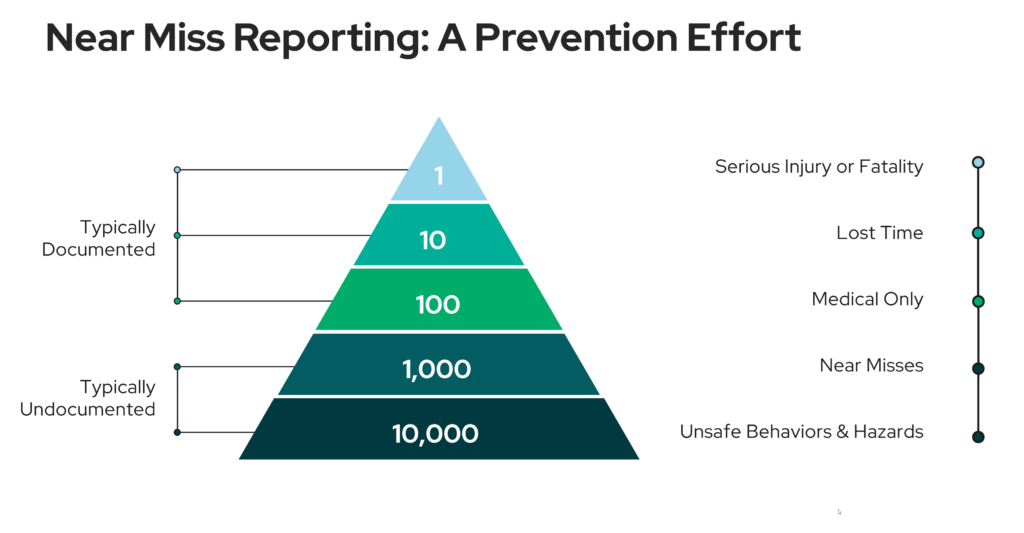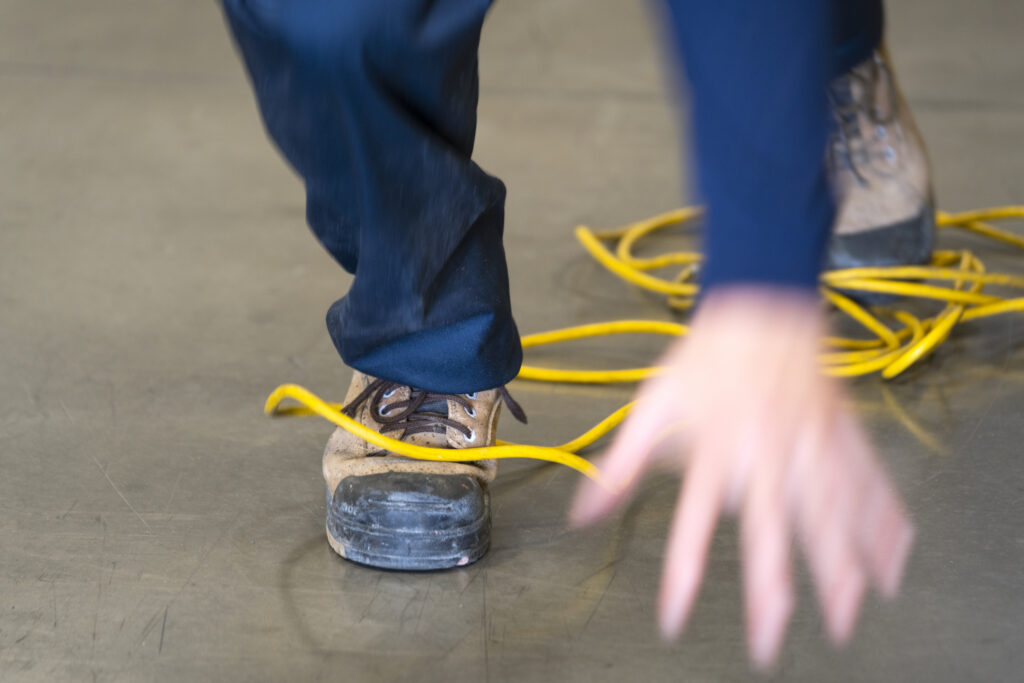A missed swing in baseball, a missed flight, a missed friend on the other side of the world are all bad things. But a near miss at work can be a good thing. It could even help the company’s bottom line.
So what exactly is a near miss?
OSHA defines a near miss as an incident in which no property was damaged, and no personal injury was sustained, but, where given a slight shift in time or position, damage or injury could easily have occurred. A near miss is an unplanned event, that doesn’t result in an injury or death, but, under difference circumstances, very well could have. Another definition sometimes used is “A near miss is an opportunity to improve health and safety in a workplace based on a condition or an incident with potential for more serious consequences.”
Oftentimes, these incidents go unreported and are considered a close call. However, by not reporting near misses, employees are also not doing anything to prevent similar and more potentially serious incidents from occurring in the future.
When near misses are reported they give the company the opportunity to identify unsafe conditions or unsafe acts in the workplace and address them, thereby resulting in a safer workplace.
What is a Near Miss Program?
A near miss program is intended to encourage employees to report events that have already happened, but for whatever reason didn’t result in an injury, or property damage. Employees are often hesitant to report near misses for fear of ticking off the boss man. Or sometimes they simply don’t want to take the time to fill out a near miss report.
Preventing Near Misses
Near miss reporting is key to preventing serious injuries and even fatalities. Ignoring the root causes of incidents that occur in your workplace can lead to serious injuries and even fatalities. Identifying hazards and addressing the underlying issues within your organization is essential to preventing OSHA reportable workplace accidents and keeping workers safe.
According to the workplace safety pyramid seen below, sometimes referred to as the accident triangle, for every 10,000 unsafe behaviors and hazards that are observed, there is typically one serious injury or fatality. This shows the importance of reporting, investigating, and documenting each incident thoroughly no matter how minor it may seem. Quite simply put, by focusing on minor incidents, including near misses, it can provide the means to reduce the probability of major incidents. Forget what you heard about not sweating the small stuff. The small stuff is important!

Many safety activities are reactive and not proactive, and some organizations wait for losses to occur before taking steps to prevent a recurrence. Near miss incidents often precede loss-producing events that may be overlooked because there was no injury or property damage. This is your chance to say “whew, someone could have gotten injured, what can I do to make sure that doesn’t happen?”
When an organization does not have a reporting culture where employees are encouraged to report these close calls, they are missing out on opportunities to prevent incidents or loss. We know that history repeats itself, right? Well, history has repeatedly shown that the most producing loss events, both serious and catastrophic, were preceded by warnings or near miss incidences. Recognizing and reporting near miss incidents can significantly improve worker safety and enhance an organization’s safety culture. By collecting near miss data, it helps your company to create a culture that seeks to identify and control hazards, therefore reducing risk and potential from harm.
5 Key Elements of Effective Incident Reporting
A well-run near miss program goes beyond just reporting near misses and completing reports. It should be made up of several different components. Let’s take a look at them.
1. Leadership Commitment
Management should promote a culture of reporting with the support of all managers and supervisors. Managers should create policies and procedures that clearly explain near miss reporting and fund the tools and resources necessary to implement a program.
This will ideally lead to a generalized employee culture that is designed to get these incidences brought to the attention of leadership so they can be managed more effectively.
2. Employee Participation
Companies should train all employees about the importance of reporting near misses and provide them the tools to do so. Management should furnish incentives for workers who do report incidences. It is critical that employees feel comfortable reporting the instances and know that they will not be get in trouble. Employees should feel good about helping to potentially prevent a bad thing from happening in their workplace.
3. Effective Reporting System
The system needs to be clearly communicated to employees and easy to use and understand. The easier the system is to use the more likely employees will be to report an incident. It should capture all the details of the event, including images of the area where it occurred and have a communication workflow. Here’s your chance to use your CSI skills!
4. Investigation and Analysis
The end goal is to identify the root cause of the incident. In other words, what could have caused the injury or damage. A successful investigation will pinpoint weaknesses and areas of the exposure in the current system.
5. Corrective Action and Communication
Once the root cause has been identified, the next step is turning investigation results into action. If the investigation identifies necessary hazard controls, those should be implemented, and any lessons learned from the incident should be communicated to employees.
Some corrective actions may include:
- Elimination of the cause of the hazard
- Reduction of the potential hazard level or degree of risk
- Installation of safety devices to protect workers from the hazard
- Installation of warning signs to alert people to the hazard
- Implementation of new safe work procedures to draw attention to the hazard
- Increased worker awareness of the hazard, like through training or safety talks
By implementing these steps your company will enable a strong, proactive and action-driven system to your near miss program.
KPA can help you develop and implement a successful near miss program but they can’t help you with your baseball swing. Contact us and we’ll show you how.

